View List of all Events
EVENTS

Krishna Public School Raipur
Rakshabandhan Celebration with the CRPF on 19 August 2024
A group of enthusiastic students from the Yuva Tourism Club at Krishna Public School in Raipur embarked on a meaningful mission to honor the brave soldiers of the nation. The young volunteers visited the 65 CRPF Battalion, where they expressed their gratitude and admiration for the selfless service of the security forces. As a token of their appreciation, the students tied colorful rakhis on the wrists of the CRPF personnel, symbolizing the sacred bond of brother-sister. The heartwarming gesture served as a reminder of the immense sacrifices made by our soldiers to protect the country. The interaction between the students and the CRPF personnel fostered a sense of camaraderie and respect for the armed forces.
Chattisgarh view all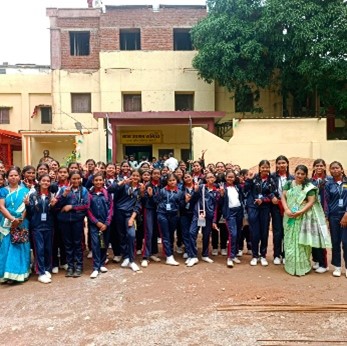
Adarsh International School, Naya Raipur
Rakshabandhan Celebration on 17 August 2024
On August 17th, 2024, the Yuva Tourism Club of Adarsh International School, Naya Raipur, celebrated Raksha Bandhan in a heartwarming and memorable way. The students visited a local orphanage, where they joyfully tied 'Rakhis' on the wrists of the children, symbolizing the bond of love and protection. The celebration was filled with smiles and laughter as the students shared sweets and chocolates, spreading happiness and creating cherished memories with the children. The event beautifully showcased the spirit of Raksha Bandhan, extending love and care beyond family ties to embrace the entire community.
Chattisgarh view all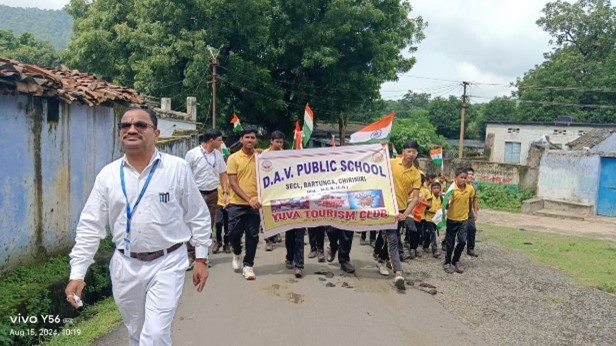
DAV Public School Chirimiri District MCB Chhattisgarh
Har Ghar Tiranga Rally on 15 August 2024
"On August 15th, 2024, the Yuva Tourism Club members of DAV Public school Chirimiri District MCB Chhattisgarh School organized a Ghar Ghar Tiranga Her Ghar Tringa relly as part of the 'Ghar-Ghar Tringa' campaign. The event began with an inspiring speech by the principal, who emphasized the significance and importance of Tringa . Name of school -DAV Public school Chirimiri Participation - members of Yuva Tourism Club Cordinator name -Ashwini Kumar Pandey
Chattisgarh view all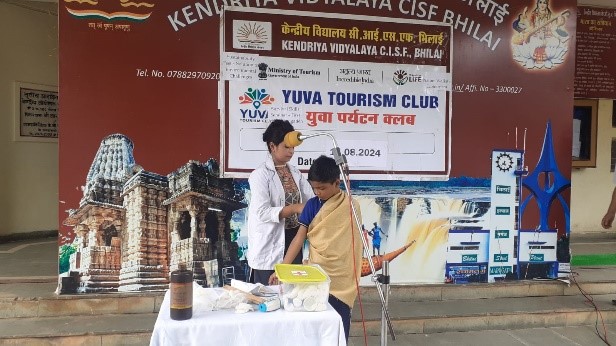
Kendriya Vidyalaya, CISF, Bhilai, Chhattisgarh
Seminar on Survival Skills and Basic First Aid on 14 August 2024
The School Youth Tourism Club recently organized a seminar on survival skills and basic first aid for students. Mrs. Geetu, the club's in-charge, inspired the students to participate in intensive tree plantation, drawing a parallel between trees and their mothers. Ms. Gitanjali Sahu, a guest speaker, provided valuable insights into first aid and navigation. She emphasized the importance of being prepared for emergencies and taught students how to handle injuries, burns, and bites from poisonous creatures. The seminar covered essential first aid techniques and guidelines, equipping students with the knowledge and skills to respond effectively in various situations.
Chattisgarh view all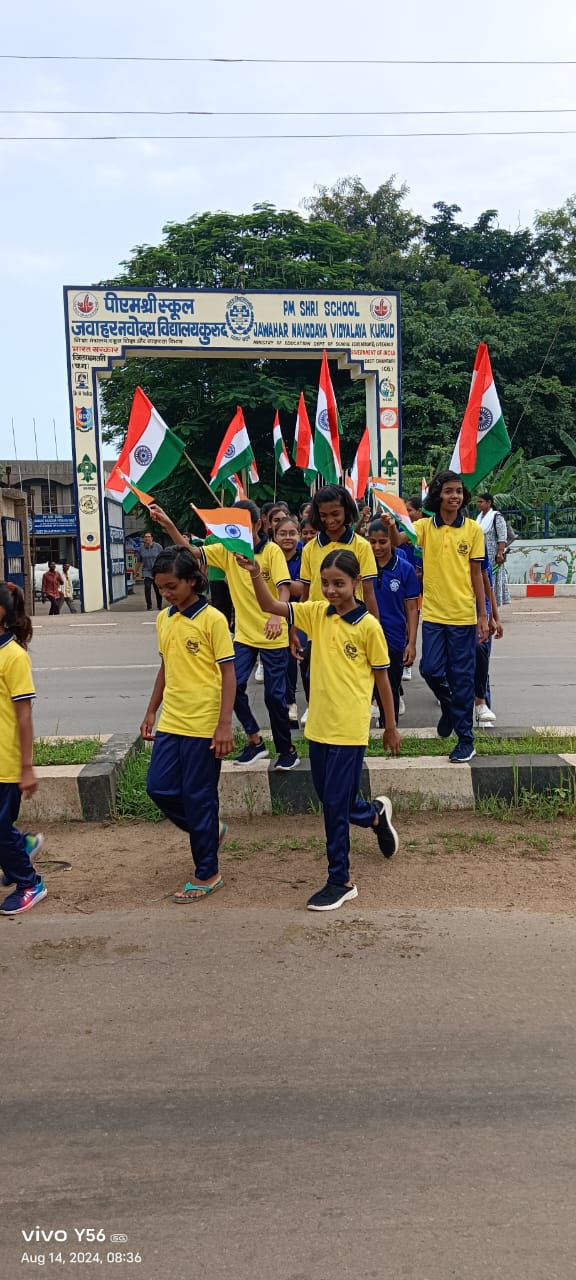
PM Shri Jawahar Navodaya Vidyalaya, Kurud, Dhamtari, Chhattisgarh
Har Ghar Tiranga Rally on 14 August 2024
A Har Ghar Tiranga rally was organized by the Yuva Tourism Club in collaboration with students of PM Shri Jawahar Navodaya Vidyalaya, Kurud, Dhamtari, Chhattisgarh. The event showcased a remarkable display of patriotism among the students. All teachers and school staff were present to support this spirited initiative.
Chattisgarh view all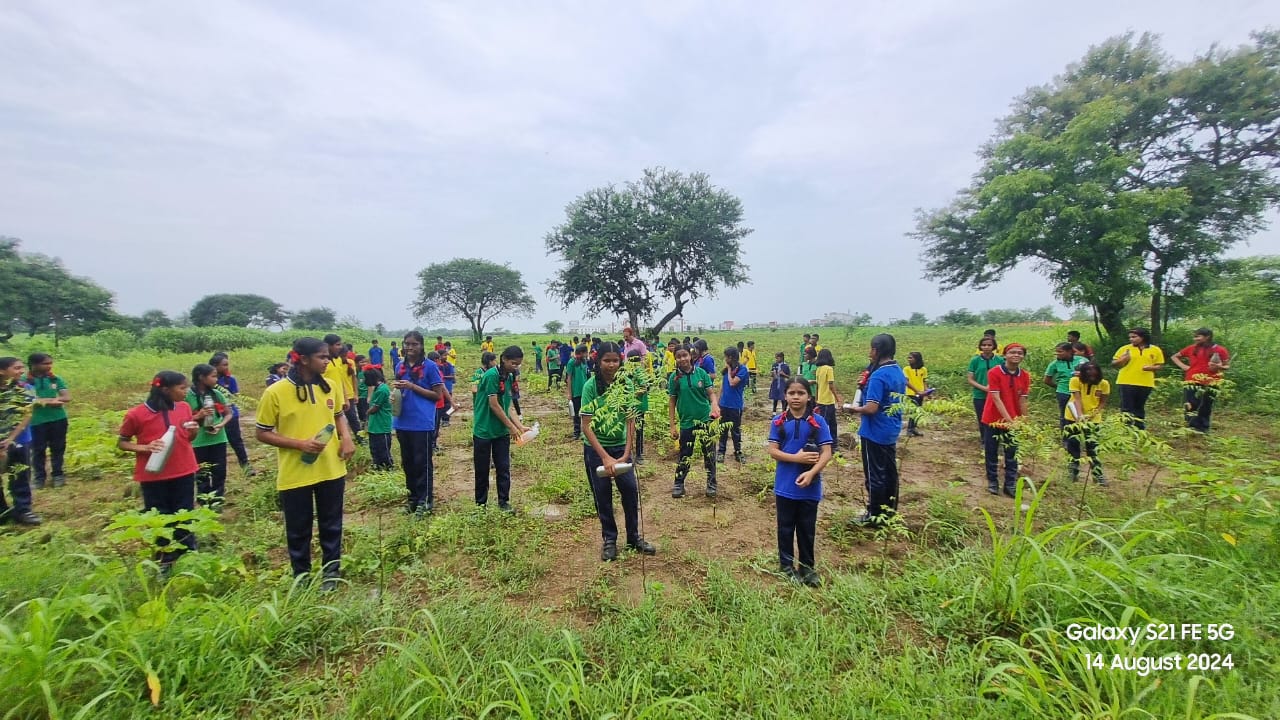
Kendriya Vidyalaya, CISF, Bhilai, Chhattisgarh
Ek Ped Maa Ke Naam, plantation drive on 14 August 2024
The Yuva Tourism Club of Kendriya Vidyalaya CISF, Bhilai, organized a grand program titled "Ek Ped Maa Ke Naam." The faculty coordinator addressed the students, inspiring them to actively participate in tree plantation initiatives.
Chattisgarh view all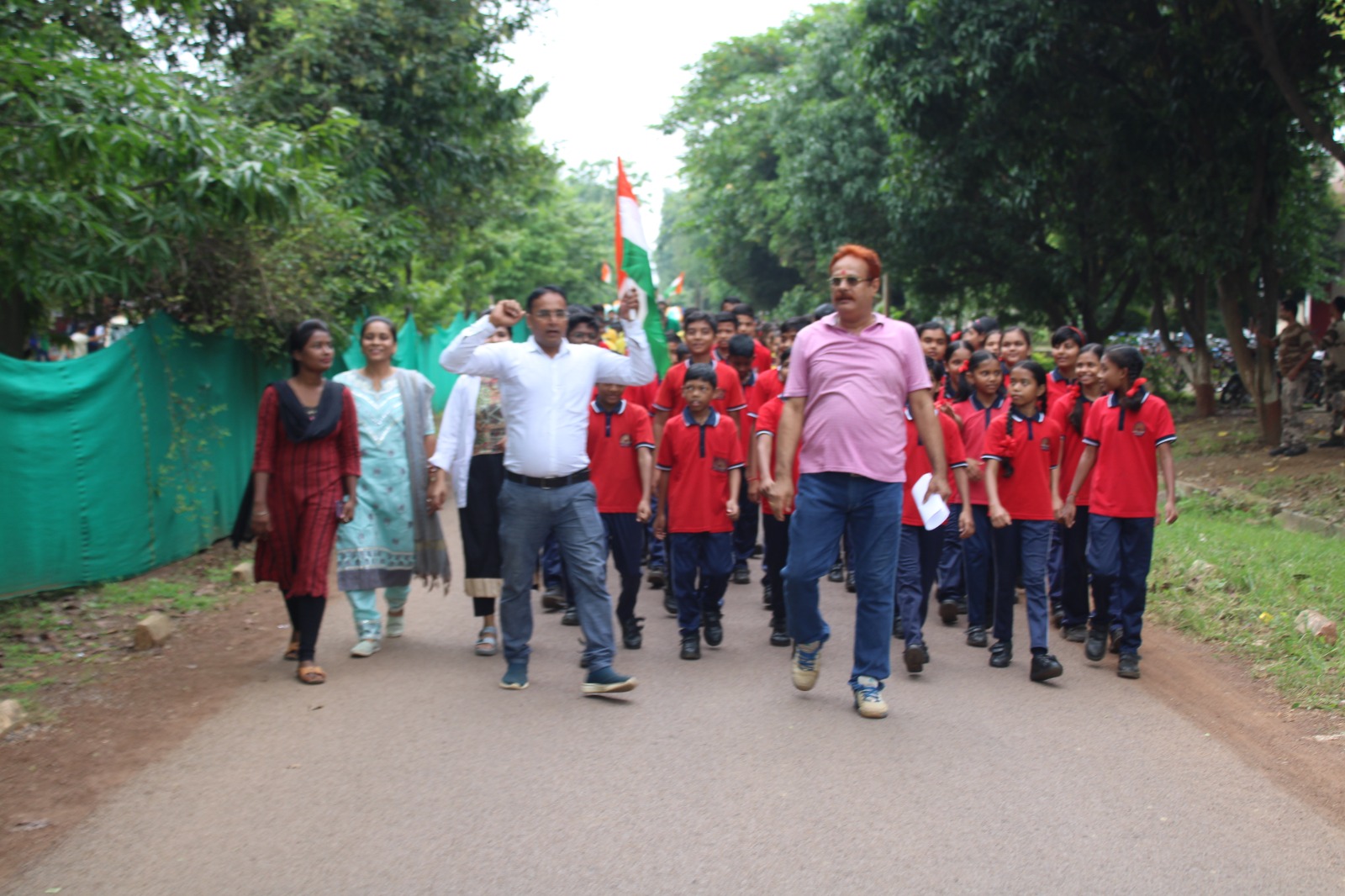
Kendriya Vidyalaya, CISF, Bhilai, Chhattisgarh
Tiranga Rally 2024 on 14 August 2024
Patriotism reached new heights at Kendriya Vidyalaya CISF Bhilai today! 🇮🇳 On the eve of Independence Day, the school came alive with the colors of the Tiranga as students, teachers, and brave soldiers from CISF 3rd Reserve Battalion, Bhilai joined hands for a spirited Har Ghar Tiranga rally. The atmosphere was electric with enthusiasm and love for the nation. It was a truly inspiring sight to behold!
Chattisgarh view all
Indu IT School, Bhilai, Chhattisgarh
Tiranga Rally 2024 on 14 August 2024
Just witnessed an incredible Tiranga Rally organized by the Yuva Tourism Club at Indu IT School, Bhilai! The students' enthusiasm and patriotism were truly inspiring. It was a sea of saffron, white, and green as everyone marched together with pride. Great job to the school for fostering such a strong sense of nationalism among the youth!
Chattisgarh view all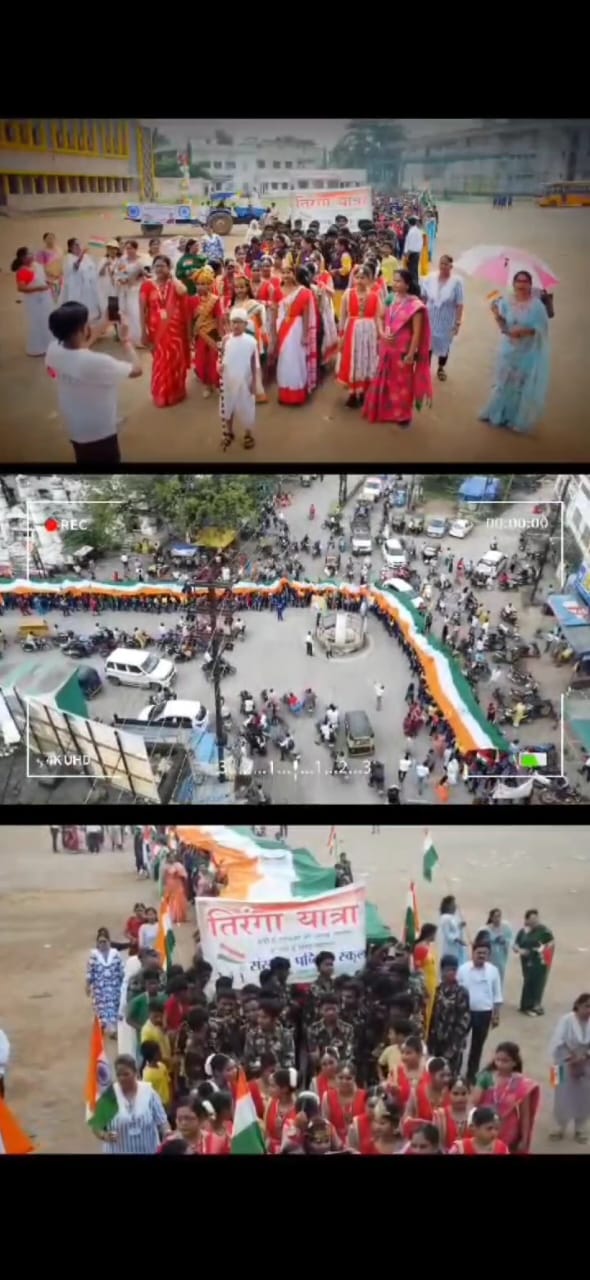
Sanskar Public School, Raipur, Chhattisgarh
Tiranga Rally 2024 on 13 August 2024
Witnessed an incredible display of patriotism & unity today by the Sanskar Public School, Raigarh , Chhattisgarh for this initiative & bringing the community together! Over 1000 people, including students, teachers, parents, and locals, came together for a Mega Tiranga Rally. Yuva Tourism Club members also took active participation, adding to the energy and enthusiasm of the event. The energy was electric, and the sense of national pride was palpable. Kudos to all the organizers and participants for a successful event!
Chattisgarh view all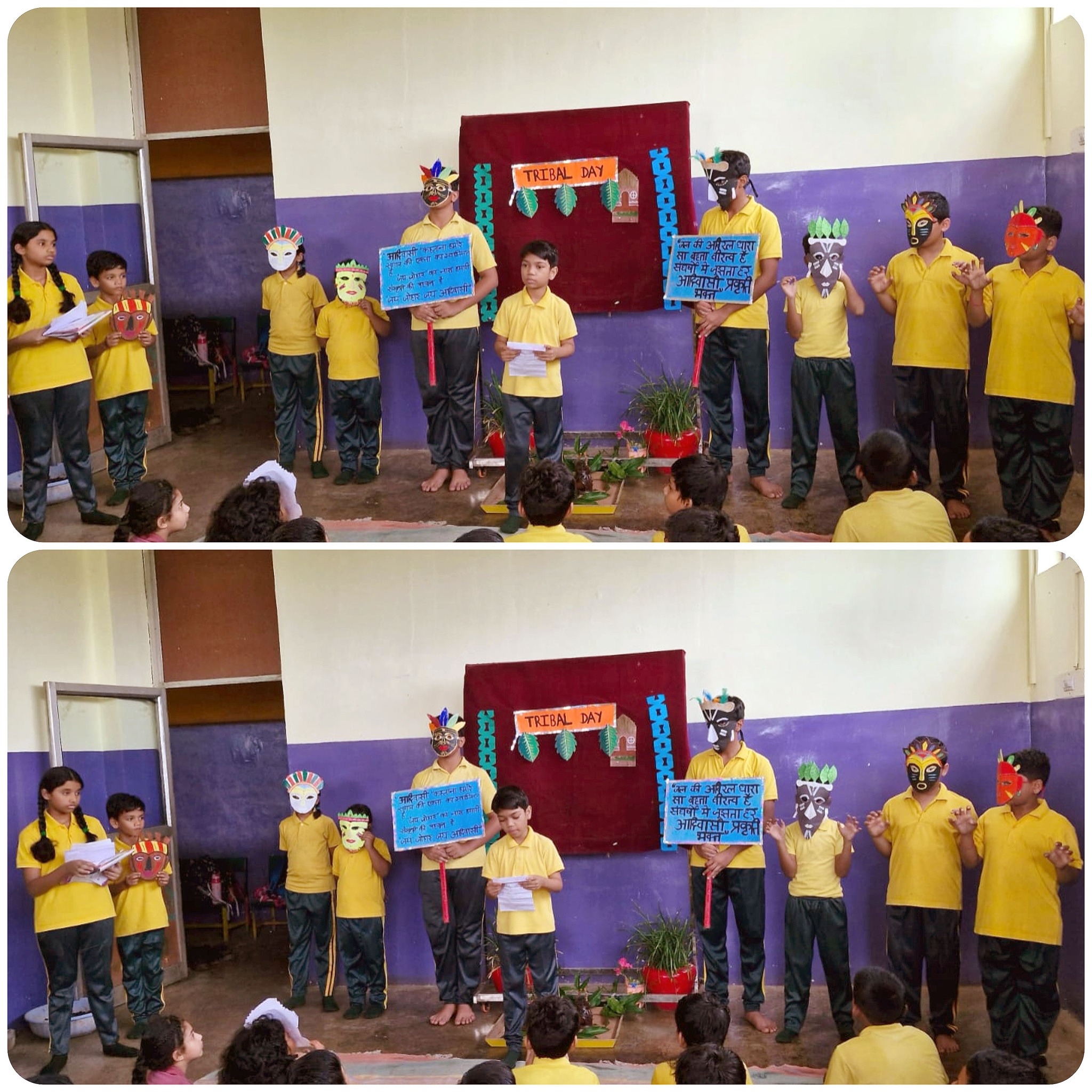
Indu IT School, Bhilai, Chhattisgarh
World Tribal Day 2024 celebration
On the World Tribal Day i.e. 09 August 2024, to celebrate the indigenous people and their culture, Yuva Tourism Club member along with other students of Indu IT School, made masks, gave speeches, and made Warli paintings the cultural heritage of Tribals. Students gave tribal Dance performances. Students were also taught the unique method of tribal painting using soaked rice.
Chattisgarh view all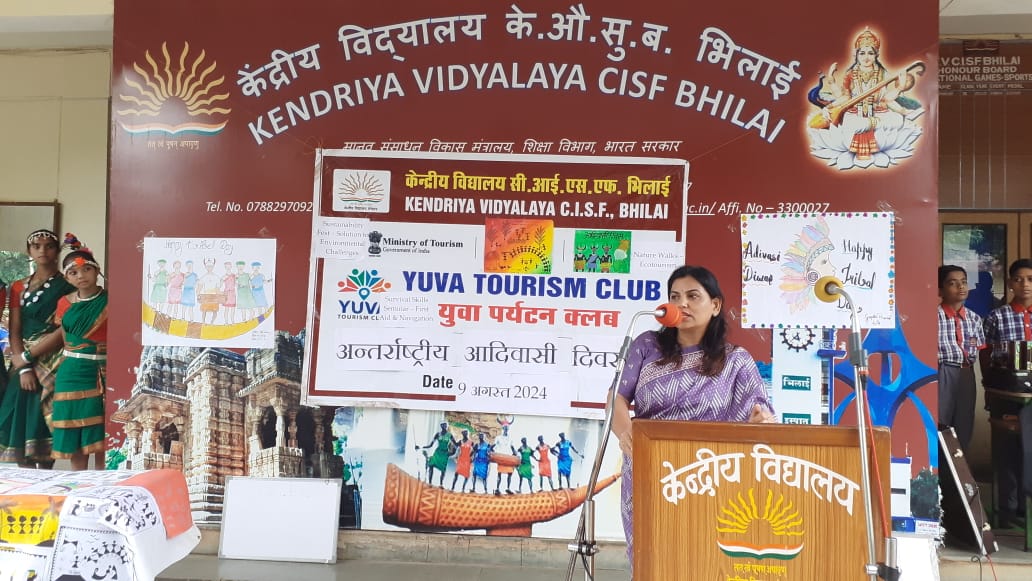
Kendriya Vidyalaya, CISF, Bhilai, Chhattisgarh
World Tribal Day celebration
World Tribal Day celebrated with great enthusiasm at Kendriya Vidyalaya CISF Bhilai! Students showcased tribal culture through dance, drama, art, and models. Yuva Tourism Club discussed eco-tourism and tribal development. At the beginning of the program, the students presented tribal group dance, story in tribal dialect, poetry recitation, drawing and painting, beautiful models of traditional jewellery, clothes, toys, musical instruments, jewellery etc. of tribals. After this, under the aegis of Tourism Club, postgraduate teacher science Mrs. Geetu and Miss Janvi Khatri expressed their opinion on how to prevent the damage caused by natural disasters in a natural way. Along with this, they shed detailed light on tourism in Chhattisgarh.
Chattisgarh view all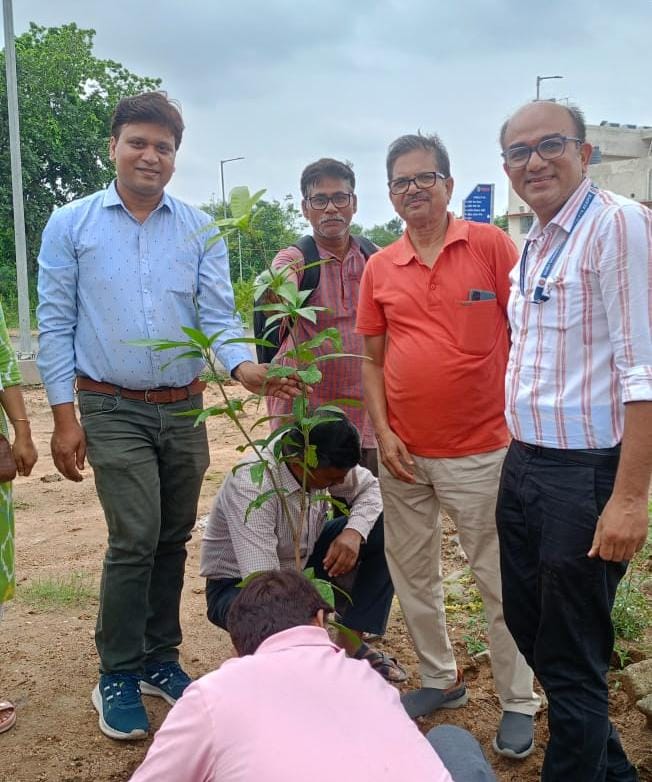
Guru Ghasidas Vishvavidyalaya Bilaspur
Plantation Drive Ek Ped Maa Ke Naam
Plantation” programme “ Ek ped Ma'am ke naam” under the National Service Scheme (NSS) at GGV campus . It was attended by NSS Programme Coordinator, college staff and 10 student volunteers. Under the Guidance of Asst. Prof. Dilip Bandhe, NSS Program Coordinator, NSS volunteers planted more than 50 plants were planted in GGV campus. Under both the program till date GGV staff and students planted 80 trees in GGV campus, wherein the active participation from the Yuva Tourism Club members of the University is also seen.
Chattisgarh view all